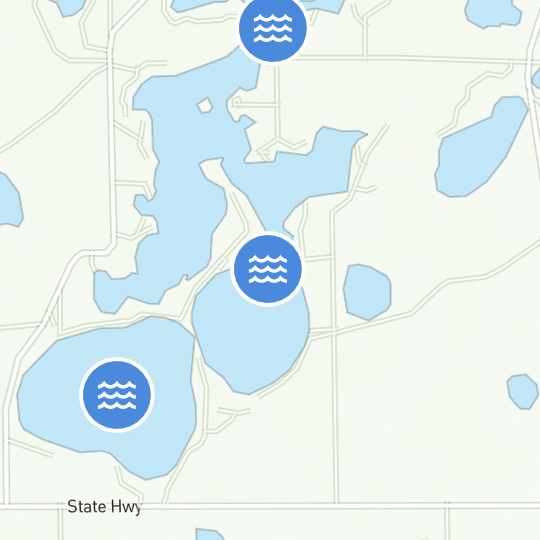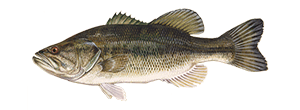Best Time To Fish For Trout
Trout fishing is both a sport and a science. Different species of trout reside in different habitats with varying optimal times for fishing. Although fishing is enjoyable regardless, prior planning and research will lead to a more successful trip.
Best Time To Catch Trout
The best time to fish for trout will depend on the time of the year, time of the day and temperature.Trout is accessible year-round as the same as freshwater fishing, but to increase your chances of success, follow these trout fishing tips:
- Conventional wisdom suggests that late spring is the best time to catch trout, especially if you're looking for larger fish.
- The warmer it gets, the more fishing pressure from other anglers, the thicker the grass and brush surrounding their habitats and the lower the water levels. Although regarded as a myth by some, the trout could be more educated on avoiding lures and bait later in the season.
- Rule of thumb: If the air temperature is uncomfortable for you (below freezing or scorching hot), it will be uncomfortable for the trout as well, since they are cold blooded and their body temperatures reflect the temperature of the water they swim in.
Time Of Day
According to trout fishing and behavior expert Jay Ford Thurston, the most important factors to consider when to fish for trout are the water temperature and cloud cover.
- Trout are most actively feeding in comfortable water temperatures between 34 and 67 degrees Fahrenheit.
- Trout feeding picks up just as the water temperature rises one degree above 40, 45 and 49 degrees Fahrenheit, so taking the water temperature every hour is beneficial.
- Since trout don't have eyelids and can't dilate their pupils, they must seek shade in extreme sun to avoid bright lights. If possible, fish under cloud cover when water temperatures are cooler or look for shady areas where you can quietly wade in with rubber boots.
- It's common to see anglers fishing right before dusk until dark, or even under a full moon, hoping to catch bigger fish the darker it is.
- In the summertime, if water temperatures rise into the high 60s, increase your chances of success by moving upstream to cooler waters.
By Temperature
Thurston has created the trout timetable below for the best time to fish trout based on a range of high air temperature (Fahrenheit).
- 34-49 degrees; 1 p.m. to 5 p.m.
- 50-55 degrees; 12 p.m. to 5 p.m.
- 56-60 degrees; 11 a.m. to 5 p.m.
- 61-65 degrees; 10 a.m. to 2 p.m.
- 66-70 degrees; 9 a.m. to 1 p.m.
- 71-75 degrees; 8 a.m. to 12 p.m.
- 76-80 degrees; 7 a.m. to 11 a.m.
- 81-85 degrees; 7 a.m. to 10 a.m.
- 86-89 degrees; 6 a.m. to 9 a.m.
How To Catch Trout
There are many different species of trout that you can catch lake trout, river trout, brown trout and rainbow trout. Here are some tips to catch each type of fish specie.
Lake Trout
Keeping in mind air and water temperatures, fishing for trout when it's significantly cooler will lead to more success in lake. A good tool for lake fishing is a depth finder, so you can adjust your fishing depth depending on the season.
- In the summer, lake trout feed between first light and before 11 a.m., especially when the water is as calm as glass with clear skies and high pressure.
- In the early spring, your chances of success increase throughout the lake since trout feed in more parts of the lake and during longer periods of the day.
- Myth has it that lake trout go to the deepest part of the lake in the summer and remain dormant there, but in fact, they stay suspended in the 53 degree Fahrenheit thermal layer, following schools of their bait fish (White Fish and Suckers).
- With a depth finder, fish your lure/bait between 10 feet and the surface following winter, between 35 and 45 feet deep in mid-spring, between 50 and 65 feet deep in late spring and at the 53 degree thermal layer in the summer.
River Trout
It's important to read up on regulations before fishing river trout with wild populations, as they could be stricter. River fishing for trout varies slightly from lake fishing, so follow these suggestions:
- The top three river trout bait is live earthworm, salmon roe and canned corn kernels.
- The smaller the river, the lighter the lure except if the river is moving quickly, in which case you'll need a heavier lure.
- When casting your line, always cast slightly upstream to allow your lure/bait to drift with the current and appear more lively.
- Spooking fish in smaller rivers is extremely easy, so you should wait up to 20 minutes to allow the hole to rest before fishing it again.
- To know which bait to fish on a certain day, follow the weather forecast. Fish worms after a rainstorm and insects on a windy day to simulate the type of food the trout would be feeding on that particular day.
Rainbow Trout
The most common and easiest species of trout to catch in North America, rainbow trout are found both stocked and wild in lakes and rivers.
- Packing a wide variety of lures allows you to try different lures and adapt to the rainbow trout's liking from day to day, even hour to hour.
- You can use a small silver and blue spoon since it works on a wide range of species (including the rainbow trout), has an attractive color and erratic action that lure the fish.
- Common knowledge suggest that the most effective bait is a playdough-like substance that you mold right onto a small hook, and with a light weight, you're ready to cast out your line, letting it float right off the bottom.
Learn when to fish in freshwaters, what is seasonal lake turnover, how water temperature affects freshwater fishing and more in our next section. If you are planning to go ice fishing learn how to ice fish for trout in our next page.
KEEP LEARNING

How to Tie the Non-Slip Loop Knot
The non-slip loop knot is a popular and reliable choice for securing hooks, lures, and other tackle to your fishing line.
LEARN MORE

Socials
Take me fishing social media links
LEARN MORE

TakeMeFishing x Teen Vogue
Join us on a creative journey as fashion designer Ahmrii Johnson walks us through her collaborative vision and process with Teen Vogue and fashion brand, Rentrayage, to create a special piece.
LEARN MORE


.png?lang=en-US&ext=.png)